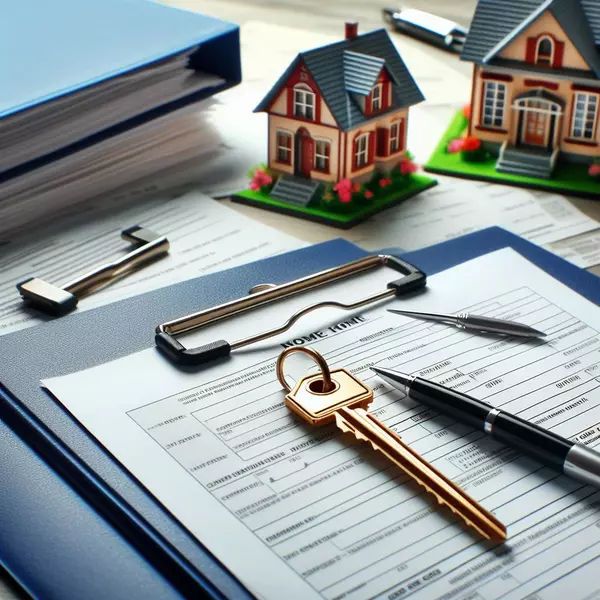Real Estate Investing: Holding Rental Properties- What You Need To Know
 A Guide to Buy-and-Hold Real Estate Investing
A Guide to Buy-and-Hold Real Estate Investing
What is Buy-and-Hold Real Estate Investing?
- Definition: A long-term strategy where investors buy properties and hold them to generate steady cash flow and benefit from appreciation over time.
- Focus: While the strategy predominantly targets residential properties—such as single-family homes, duplexes, and apartment buildings—it can also extend to commercial properties. However, investing in commercial real estate typically demands a higher initial capital investment and more intensive property management.
Benefits of Buy-and-Hold Strategy
- Steady Cash Flow: Reliable income through rental payments. This consistent cash flow can help cover mortgage payments, property management fees, and maintenance costs.
- Property Appreciation: Real estate generally increases in value over time. By adopting a buy-and-hold approach, investors can benefit from long-term appreciation, leading to increased property equity when sold.
- Tax Benefits: Investors can take advantage of various tax incentives, including:
- Depreciation: A tax deduction that allows property owners to recover the costs of the property over time.
- Deductions for property taxes and mortgage interest. These costs can often be deducted from the investor's taxable income.
- Leverage: Real estate allows investors to use leverage, meaning they can purchase properties using borrowed funds, increasing potential returns while only putting a portion of their own capital into the investment.
*It is recommended to consult with a CPA for further information on the tax benefits.
Risks to Consider
- Vacancy: A significant risk associated with buy-and-hold investments is the possibility of extended vacancies, which can lead to a loss of rental income and increased financial pressure on the investor.
- Unexpected Repairs: Owners can be faced with unforeseen maintenance issues, which often require a substantial cash outlay. It's crucial for investors to maintain contingency funds for such occurrences.
- Market Fluctuations: The real estate market can experience downturns, potentially diminishing property values. Investors must be prepared for market cycles and economic shifts that can impact their investments over time.
How to Implement Buy-and-Hold Investing
- Find Good Real Estate Properties:
- Choose properties attractive to renters and future buyers.
- Look for neighborhoods with population growth.
- Focus on family-friendly homes (3–4 bedrooms in secure areas).
- Use local real estate agents for guidance.
- Finance Your Property Purchase:
- Traditional mortgages
- Freddie Mac’s investment property mortgage
- Portfolio loans
- 1031 tax exchanges
- Improve credit score for better financing options.
- Explore financing methods:
- Increase Property Value:
- Flooring
- Paint
- Kitchen appliances
- Bathroom fixtures
- Exterior enhancements
- Make cost-effective updates:
- Save an emergency fund (3x expected rental income).
- Become a Landlord:
- Choose between self-management or hiring property managers (~10% of annual rent).
- Learn landlord-tenant laws and Fair Housing regulations.
- Use tools like TurboTenant for property management and tenant communication.
- Prepare for Unexpected Costs:
- 50% Rule: Save 50% of rental income for maintenance and costs.
- 1% Rule: Save 1% of property value annually for repairs.
- Follow financial planning rules:
- Build a reliable network of professionals (handyman, electrician, attorney).
- Tools to assist in your search:
- Rentometer.com: Quickly evaluate current market rental prices, which includes average and median rent prices.
- Calculator.net: Free rental property calculator estimates IRR, capitalization rate, cash flow, and other financial indicators of a rental or investment property
Engaging in buy-and-hold investing is a proven method for building wealth over time through steady cash flow and property appreciation. Success in this strategy requires careful property selection, astute financial planning, and effective property management. By being informed and prepared, you can navigate the complexities of real estate investing to create a stable and rewarding investment portfolio.
Recent Posts

Real Estate Investing: Holding Rental Properties- What You Need To Know

The Pros and Cons of Buying Rental Property and Becoming a Landlord

National Insurance Awareness Day: A Crucial Reminder for Homeowners

Step 3: Pre-Market Tasks

Step 2: Paperwork!

Step 1: Hire a REALTOR

Step 3 to Buying a Home: Get Pre-Approved for a Mortgage

Step 2 to Buying a Home: Buyer Consultation with your REALTOR

Step 1 to Buying a Home: Find a REALTOR

Curb Appeal Can Make or Break the Sale of Your Minnesota Home!

